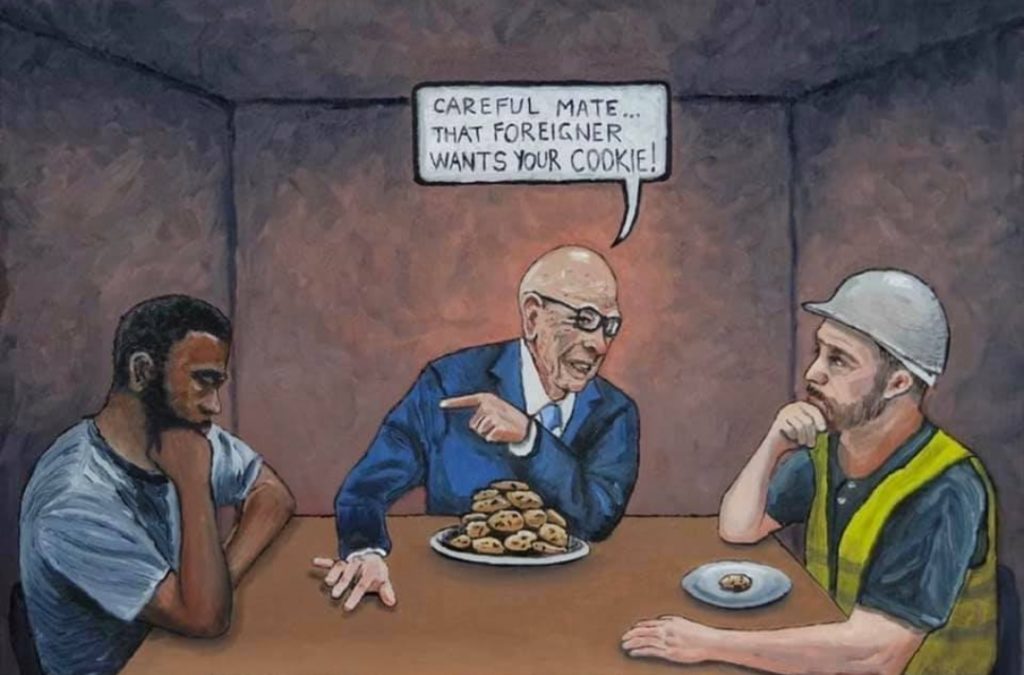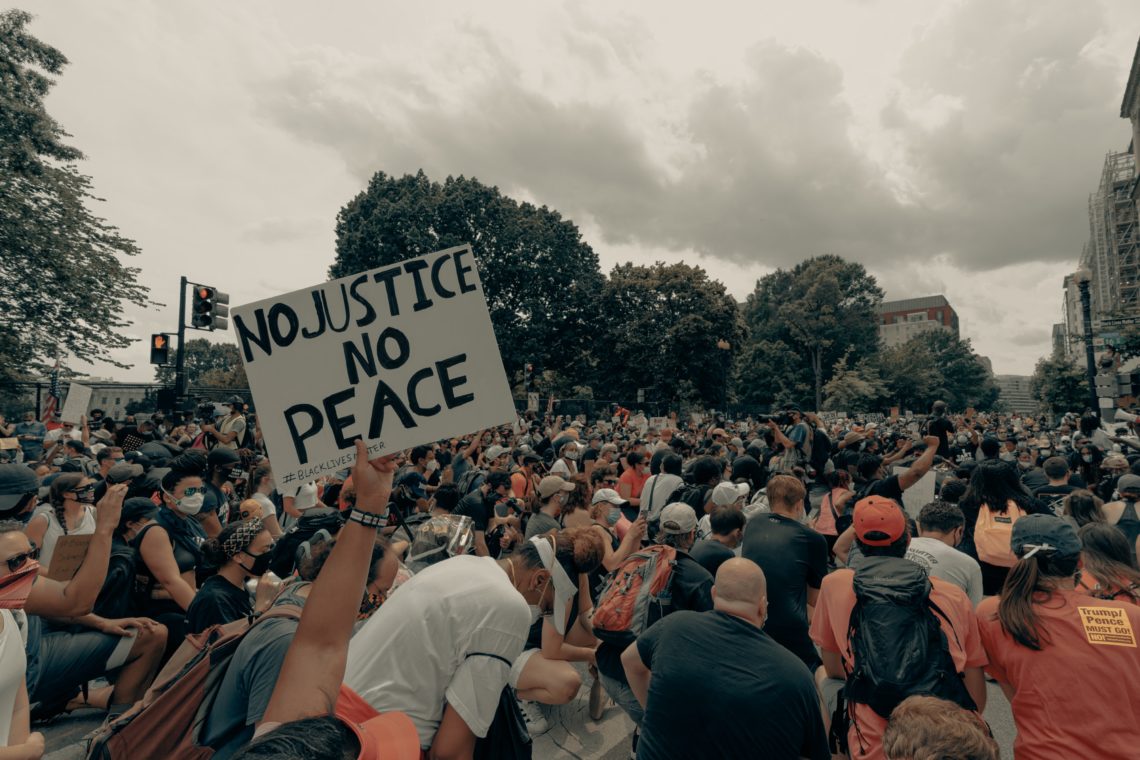Some of the harshest treatments of Black Americans have formed as a backlash to multiracial coalitions of poor people banding together against the white elite. I’ve written a bit about Bacon’s Rebellion, an armed uprising by Virginia settlers led by Nathaniel Bacon in the 1670s, and how it scared the elites of the time not because a raucous group of people managed to take down the Virginia state capital, but because the group included Black and white people working together. That fear of future multiracial alliances caused Virginia’s lawmakers double down on broadening the legal distinctions between “white” and “black” inhabitants. This would prove to be the final labor pains birthing the ideology of race-based chattel slavery into what would become the United States of America.
In 2010 in the New Jim Crow Michelle Alexander writes,
“History seemed to repeat itself. Just as the white elite had successfully driven a wedge between poor whites and blacks following Bacon’s Rebellion by creating the institution of Black slavery, another racial caste system was emerging nearly two centuries later, in part due to efforts by white elites to decimate a multiracial alliance of poor people. By the turn of the twentieth century, every state in the South had laws on the books that disenfranchised blacks and discriminated against them in virtually every sphere of life.”
Almost as soon as freedom was claimed by the formerly enslaved the criminal justice system was weaponized by elites against those who would agitate for change to American Apartheid.
In 1941 researchers Allison Davis, Burleigh B. Gardner, and Mary R. Gardner published Deep South, an Ethnography of Racial Caste and Class. It was based on research done in Natchez, Mississippi, in the 1930s. A few years later American anthropologist Gerald Berreman returned to the US after conducting fieldwork in India to find the American Civil Rights movement making the news. His essay, “Caste in India and the United States,” written in 1960, concluded the Jim Crow South to be a caste society.
Martin Luther King, the Kennedys, both John and Robert, Malcolm X, Black Panther leader Fred Hampton, and more were all assassinated only after reaching hands across the aisle of race and class. From the encoding of enslavement after Bacon’s Rebellion to the rash of assassinations in the 60s to the Move bombing of the 1980s to the modern day the state has stepped in to violently defend the status quo. The Powers That Be are deathly afraid of multiracial partnerships including People of Color and white people, especially those including Black and white people. Why? For the reason behind most, if not all, racial politics within the US. Money.
There is a saying in the Black community that we will never get justice if we focus our fight on each other. Divide and conquer is something that white elites have long weaponized to stay on top of the American class hierarchy. Back in the 1670s, in the aftermath of Bacon’s rebellion, white elites’ biggest concession to the poor white farmers and indentured servants was to push Black people down while offering poor whites a feeling of inclusion. The next several centuries would have poor whites collude with wealthy planters to enforce the system, in the South and in the North.
Organized policing in the form of slave patrols started in the South in the early 1700s but soon spread to all thirteen colonies, all of which were slave states at the time. Vermont, the first of the colonies to outlaw slavery, would not do so until 1777. The process of becoming a patroller was different from state to state but in many the patrols were made up of a combination of wealthy landowners and lower-class men, all white of course.
In Slave Patrols: Law and Violence in Virginia and the Carolinas historian Sally Hadden writes, “Most law enforcement was, by definition, white patrolmen watching, catching, or beating black slaves.” These were government enforced positions, local militias in which citizens were obligated serve as agents of the state. Slave patrols enforced the status quo, securing the place of the wealthy landowners, and bonded poor and wealthy whites over the dehumanization of Black people. For the white rich, it was a win win.
In the mid twentieth century President Lyndon B. Johnson said, “If you can convince the lowest white man he’s better than the best colored man, he won’t notice you’re picking his pocket. Hell, give him somebody to look down on, and he’ll empty his pockets for you.” More recently this idea can be seen in the cookie meme. I used to think this was a very human thing, but I now realize that even more it is a very American thing.

Race is a social construct. This means that it is constructed differently in different societies. In the United States race was constructed to support and promote a class system centered around race-based chattel slavery and white supremacy. It is how our racial categories came into being. This ideology is deeply embedded into our mythology and into our systems. This racial construct is intertwined with our ideas of and about those who become those agents of the state whose job it is to enforce the status quo. It’s bound to our ideas of fairness, of bootstraps, of social mobility, and of the inherent inferiority of any who cannot succeed in this environment.
Right now, there is a multiracial coalition on our streets agitating for a change to these systems that make up the very core of the United States of America. After so many: men, women, and children, have been extrajudicially executed by the state or those who would represent it I really didn’t think anything would motivate the mass of white people in the US to believe that Black lives matter. Much less to recognize and believe in our humanity enough to stand with us. This is an odd place for me to be. For me to feel.
I am conflicted. Afraid, because in the past and despite all the hand wringing about what MLK would do, change has only come with the spilling of blood. Usually the blood of Black people at the hands of the state. Awed and humbled to see and hear people here in the US and around the world confirming and affirming that what is reality for too many is simply wrong and needs to change. On the other hand, this has always been a white problem. And I have always been fully human.
Sources
https://www.amazon.com/Deep-South-Anthropological-Southern-Classics/dp/1570038155
https://isreview.org/issue/73/how-racial-caste-system-got-restored
https://lawliberty.org/the-dangers-of-an-american-caste-system/
https://rai.onlinelibrary.wiley.com/doi/abs/10.1111/j.1467-9655.2011.01709.x
https://en.wikipedia.org/wiki/Caste
https://www.theatlantic.com/magazine/archive/1881/12/caste-in-american-society/305936/
https://theconversation.com/does-america-have-a-caste-system-89118
https://www.theatlantic.com/business/archive/2015/12/meritocracy/418074/
The New Jim Crow: Mass Incarceration in the Age of Colorblindness, By Michelle Alexander
https://www.cbsnews.com/news/income-inequality-in-america-how-98-trillion-of-household-wealth-is-distributed/
https://inequality.stanford.edu/publications/20-facts-about-us-inequality-everyone-should-know
https://cw.ua.edu/category/sports/
https://thoughtcatalog.com/kovie-biakolo/2014/01/the-lie-of-meritocracy-and-the-illusion-of-the-american-dream/
https://lawenforcementmuseum.org/2019/07/10/slave-patrols-an-early-form-of-american-policing/
(Indigenous community is not mentioned here due to complexity and ignorance of depth on my part.)
